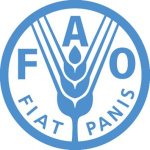- Industry: Agriculture
- Number of terms: 87409
- Number of blossaries: 0
- Company Profile:
Established in October 1945 with the objective of eliminating hunger and improving nutrition and standards of living by increasing agricultural productivity, FAO coordinates the efforts of governments and technical agencies in programs for developing agriculture, forestry, fisheries, and land and ...
A type II restriction endonuclease that binds (and subsequently cleaves) DNA at sites that contain a sequence of four nucleotide pairs that is uniquely recognised by that enzyme. Because any sequence of four bases occurs more frequently by chance than any sequence of six bases, four-base cutters cleave more frequently than do six-base cutters. Thus, four-base cutters create smaller fragments than six-base cutters.
Industry:Biotechnology
A type II restriction endonuclease that binds (and subsequently cleaves) DNA at sites that contain a sequence of six nucleotide pairs that is uniquely recognized by that enzyme. Because any sequence of six bases occurs less frequently by chance than any sequence of four bases, six-base cutters cleave less frequently than do four-base cutters. Thus, six-base cutters create larger fragments than four-base cutters.
Industry:Biotechnology
A type of biosensor, in which an enzyme is immobilized onto the surface of an electrode. When the enzyme catalyses its reaction, electrons are transferred from the reactant to the electrode, and so a current is generated. There are two types of enzyme electrodes:
ampometric, where the electrode is kept as near zero voltage as possible. When the enzyme catalyses its reaction, electrons flow into the electrode, and so a current flows; and
potentiometric, when the electrode is held at a voltage which counteracts the voltage determined by the enzyme's tendency to push electrons into its.
Usually enzymes transfer their electrons inefficiently to the electrode, so a mediator compound is coated onto the electrode to help the transfer.
Industry:Biotechnology
A type of cell occurring within the xylem of flowering plants. Many are water-conducting vessels.
Industry:Biotechnology
A type of culture in which (single) cells and/or clumps of cells grow and multiply while suspended in a liquid medium.
Industry:Biotechnology
A type of gene action in which heterozygotes have a phenotype that is distinctly different from, and intermediate to, the homozygous phenotypes.
Industry:Biotechnology
A type of plant development in which the terminal bud of the stem stops growing due to either its abortion or its development into a flower or an inflorescence, and the uppermost lateral bud takes over the further axial growth of the stem.
Industry:Biotechnology
A type of protein which enables RNA polymerase to ignore certain transcriptional stop or termination signals and read through them to produce longer mRNA transcripts.
Industry:Biotechnology
A type of respiration in which foodstuffs are completely oxidized to carbon dioxide and water, with the release of chemical energy, in a process requiring atmospheric oxygen.
Industry:Biotechnology
